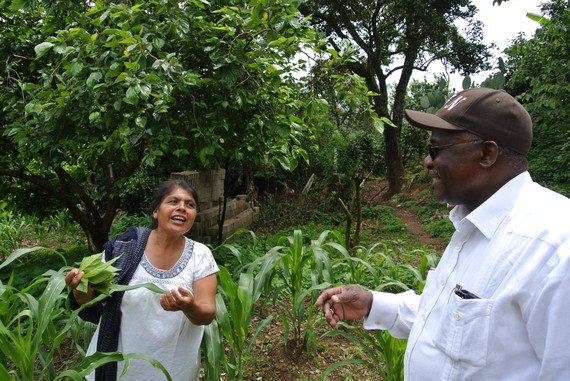April 15 is a day when millions of Americans are focused on the question of resources--where they come from, what's going to be left over for tomorrow and what their children may expect to inherit.
I am speaking of financial resources, of course. But the resource question is larger than that. In fact, the whole world has a resource envelope, and our actions, individual and collective, will determine what our children will inherit. The cost of inaction is high: continued hunger and poverty, rising inequality, climate change and degradation of the environment.
As a scientist and also the head of an international financial institution dedicated to eradicating poverty in rural areas, I have to listen to what my heart is telling me, what the facts are demonstrating, and what the bottom line is. For the International Fund for Agricultural Development (IFAD) all signs indicate that we have to act now to address the problems of today, because if we don't, the problems of tomorrow will only be larger, and the costs greater - not just in money but in lives.
The Ebola epidemic illustrates this. A disease that was mostly ignored for decades when it affected only Africans in remote rural areas, has now killed more than 10,500 people. Back when prevention could have counted, there was little investment in early detection, treatment or vaccination, medical facilities, infrastructure and community education that would have limited the spread of the disease. Ebola has cost billions of dollars in economic losses for the affected countries, on top of the cost of global emergency responses. The social cost is incalculable.
Oliver Wendell Holmes said that taxes are the price we pay for civilization. We should remember that they also fund the research that will lead to vaccines that will save the lives of grandchildren not yet born, projects that will bring water to parched fields and grow food for the hungry, and job creation that will lead unemployed youth to pick up a profession instead of a gun.
This year, the governments of the world are coming together to frame a set of new Sustainable Development Goals (SDGs) that could chart the way toward the elimination of hunger and poverty. In addition, a conference on financing for development will be held in July to help us come to grips with how we will pay for the elimination of this double scourge.
So what is the price of a better world?
It has been estimated that to end hunger, achieve food security and improved nutrition and sustainable agriculture could cost up to $300 billion a year beyond what is already being spent on development. That sounds like a staggering figure, especially at a time when everyone from CEOs of companies to presidents of countries is looking for ways to cut costs, not increase them.
But let's put that figure in perspective. In 2014, the global defense trade rose for the sixth year in a row, to an estimated $64.4 billion. While it's important to ask where we will get the resources we need, we also should spend some time thinking about what we are doing with the resources we already have.
And we had better think fast, because the cost of inaction just gets steeper. For example, in 2012 the International Energy Agency put the cost of switching to low-carbon energy at $36 trillion between now and 2050. Today, the estimated cost is $8 trillion higher. Why? Because in just three years rising emission rates and greenhouse-gas levels have made the problem worse.
This year, there is no doubt that the world stands at a point of fateful decision. Are we willing to pay the price for inclusive development? Which reaches even into remote areas that are often ignored? Three billion people live in the rural areas of developing countries, and those areas are also home to three-quarters of the world's poor and hungry. Why should we invest in transforming this forgotten world?
One reason is that inequality is the biggest threat to the global economy in the coming decade, according to the World Economic Forum. Another is that small farmers in the developing world are responsible for about four-fifths of food production. Another is that it is the right thing to do and it's absurd to talk about development while leaving nearly a billion people hungry. Another is that, as Ebola showed, what happens in a remote village affects us all.
So whether you're a banker, a scientist or just someone who cares, development is your business. And you can help make 2015 a year of important decisions.

